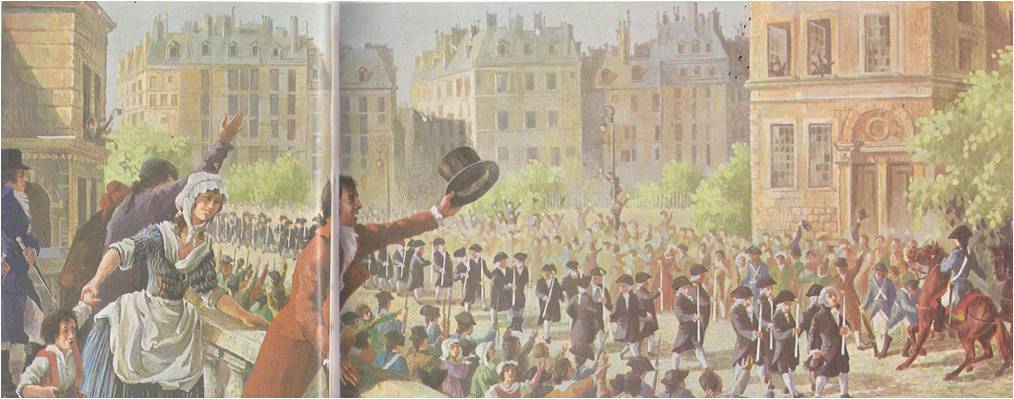Even though you are familiar with the story of the American Revolution, perhaps you do not realize that only nine short days at Christmas time in 1776 changed the course of the English colonies’ fight for freedom. Within that short space of time, General Washington’s ragged, dwindling army captured the hired German troops at Trenton, New Jersey and routed a British force at nearby Princeton. To win such surprising victories and to keep the American Revolution from collapsing took the devoted leadership and military skill of General George Washington. It took patriot soldiers whose term of service had run out …
Read More »Tag Archives: Lafayette
The Fall of King Louis 1789-1793
“Down with the King!” That cry was heard again and again on the night of August 9, 1792, as restless mobs gathered in the streets of Paris. They had only one purpose in mind and that was to make certain the king was toppled from his throne. The Assembly had been warned to dispose of the king before midnight and that deadline was only hours away. If the Assembly failed to act, the mobs would join forces, march on the royal Palace and seize the king themselves. As the midnight deadline approached, the frightened members of the Assembly were still …
Read More »“The King to Paris!” 1789
In the towns and cities of the provinces, the news of the fall of the Bastille led to wild celebrations and a series of revolts against local governments. These governments had long been unpopular, since most of them were controlled by nobles and others who had bought their government positions from the king. The town people set up new governments, similar to the one in Paris and organized local units of the National Guard. The revolution spread to the countryside as well. There the peasant uprising had started even before the fall of the Bastille. The peasants made up at …
Read More »The Voice of the People 1789
The sun had broken through the clouds after a night of spring showers. Dripping leaves sparkled in the golden light, which flooded the gaily decorated streets of Versailles and the broad terraces of the king’s royal palace. It was May 4, 1789, the day of the opening ceremony of the recently elected Estates General. The streets were crowded with visitors, most of them from Paris, only a few miles away. They had come to see the grand procession of the Estates General and were in a holiday mood. The shops were closed. Local citizens watched from windows, crowded balconies and …
Read More »The Road to Yorktown 1777 – 1781
The big English setter did not look like a stray dag. When it came wandering into Washington’s camp one day in the fall of 1777, a soldier brought it to his officer. The officer took it directly to Washington’s headquarters and pointed out the name on the dog’s collar–“General Howe.” Washington had the dog fed while he wrote a polite note to General Howe. Half an hour later, the dog and the note were sent to the British camp under a flag of truce. The incident was not important, but it gave the Americans something to laugh and joke about …
Read More »



